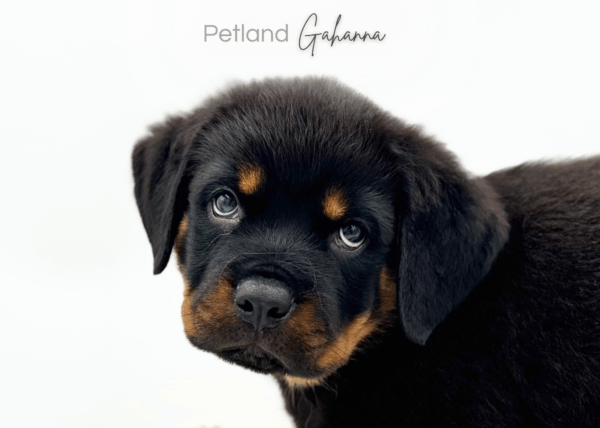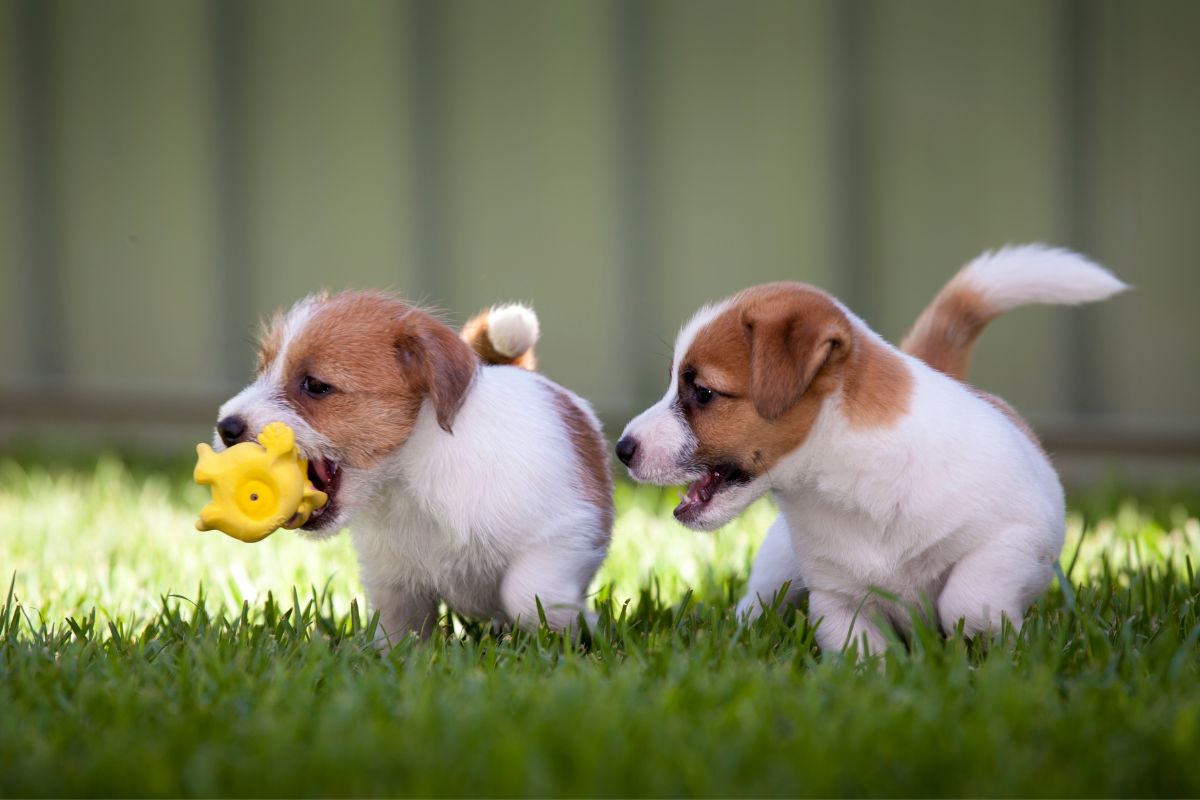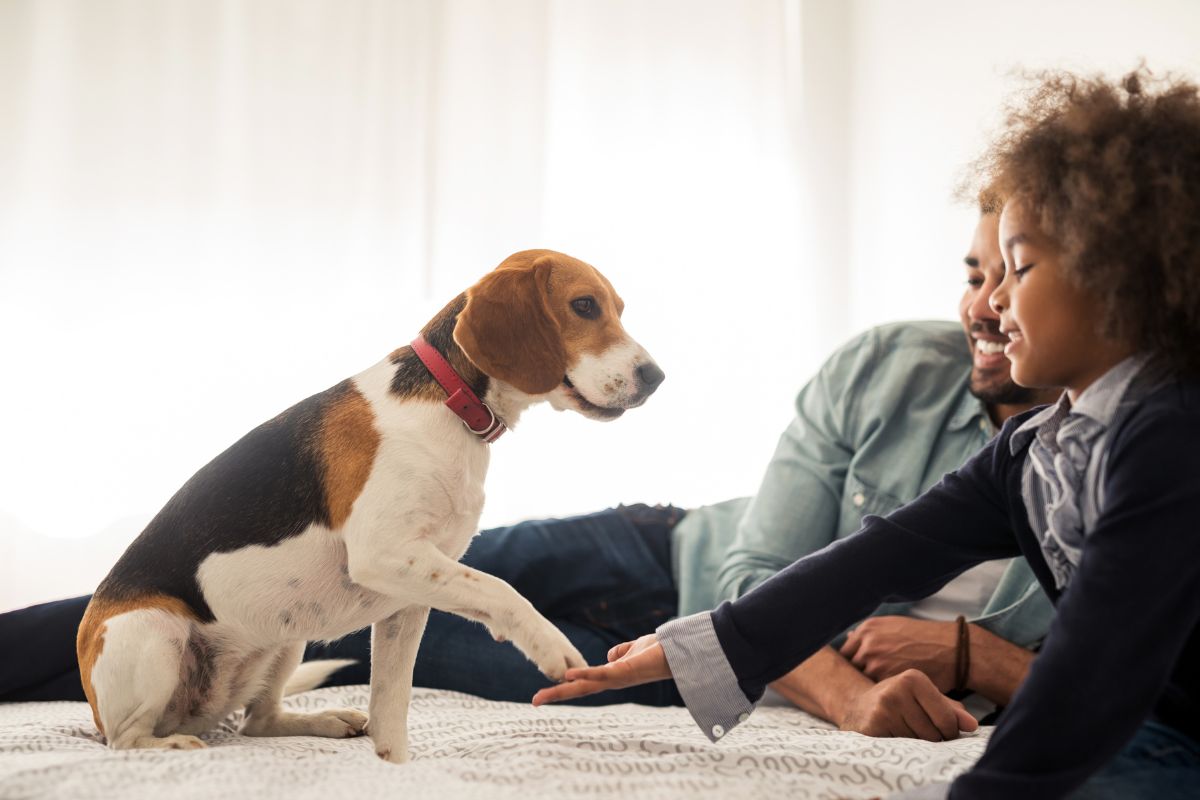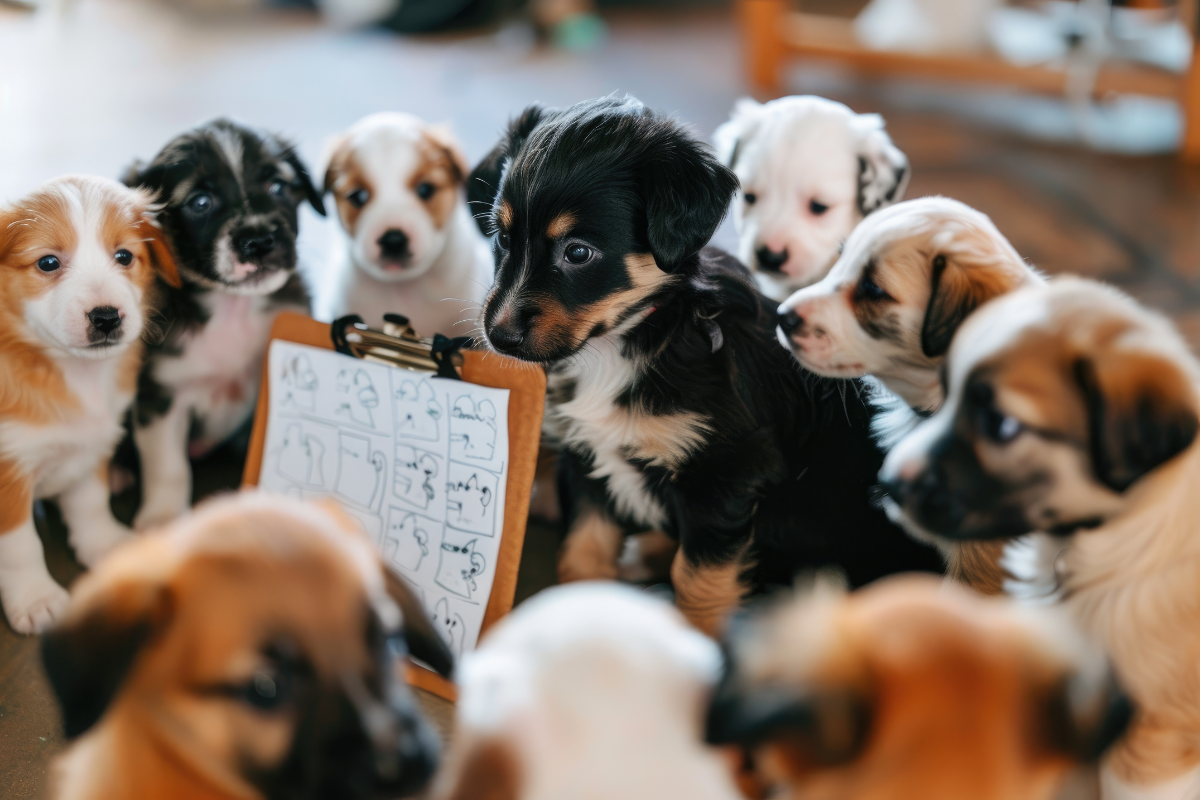Please create a free account, or login by clicking here.
Petland Gahanna, Ohio


Status
Available
Reference ID
342
Availability
06-25-2025
Birth Date
04-21-2025
Age
9 Weeks 4 Days
Gender
Male
Color
Black / Tan
Location
Petland Gahanna
Breed: Rottweiler
Pet ID: 251376-06
Color: Black / Tan
The Rottweiler is a robust working breed of great strength descended from the mastiffs of the Roman legions. A gentle playmate and protector within the family circle, the Rottie observes the outside world with a self-assured aloofness. A male Rottweiler will stand anywhere from 24 to 27 muscular inches at the shoulder; females run a bit smaller and lighter. The glistening, short black coat with smart rust markings add to the picture of imposing strength. A thickly muscled hindquarters powers the Rottie’s effortless trotting gait. A well-bred and properly raised Rottie will be calm and confident, courageous but not unduly aggressive. The aloof demeanor these world-class guardians present to outsiders belies the playfulness, and downright silliness, that endear Rotties to their loved ones. (No one told the Rottie he’s not a toy breed, so he is liable plop onto your lap for a cuddle.) Early training and socialization will harness a Rottie’s territorial instincts in a positive way.
The Roman Empire was the organizing force behind Western Europe’s formative years, and dog breeding was among the many pursuits forever altered by the Roman genius for practical problem solving. When conquering Roman legions marched to far-flung corners of the world, they brought their herds with them as food on the hoof. The army required tough, durable dogs to move and guard the herd. Utilizing Asian mastiff types as breeding stock, the Romans developed the distant ancestor of today’s Rottweiler. For centuries the legions struggled to contain Germanic tribes, the so-called barbarian hoards, massed on the Empire’s northern borders. The dogs the Romans brought to these areas became foundation stock for many German breeds. In the centuries after the empire’s collapse, the Roman drover dogs found work in the cattle town of Rottweil. It was here, moving herds from pasture to market and protecting all concerned from bandits and rustlers along the way, that they earned the name Rottweiler Metzgerhund, or Butcher’s Dog of Rottweil. The Rottie’s career in livestock ended with the rise of the railroad cattle cars in the 1800s. They found new work as police dogs, personal protectors, and all-around blue-collar dogs capable of performing various heavy-duty tasks. Rotties were among the first guide dogs for the blind, and in more recent times they distinguished themselves as search-and-rescue workers at such disaster sites as Oklahoma City and the World Trade Center. Considering the many roles the breed has played during its long history, it is remarkable that the Butcher’s Dog has changed little in form and temper since its first German breed standard was drawn up in 1901.
The Rottweiler is a confident, bold and sometimes calm breed of dog. It cannot be intimidated either by other dogs or humans. It doesn’t make friends easily but is very loyal when it does. The Rottweiler is not a jumpy, lively dog. Most times it keeps to itself and observes.
Its first instinct is to protect and they can be aggressive whenever they perceive a threat. Rottweilers can easily adapt to a new environment and they are very intelligent. They can be very stubborn hence require firm discipline. They are strong-willed dogs, so training them will require consistency and patience.
Rottweilers love swimming, walking, and trotting, especially with their people. The breed is muscular and athletic, and should have the opportunity to exercise on a daily basis. If there are jobs to do, Rottweilers learn easily to cart and are excellent workers in herding, tracking, and obedience. There is no limit to the canine activities that the Rottweiler can learn to do. Excess weight is not good for any dog, and exercise can help to keep your Rottweiler fit and healthy.
The Rottweiler has a straight, coarse, medium-length outer coat that lies flat. The undercoat is present on the neck and thighs. He should be brushed weekly and bathed regularly. He sheds only very moderately for most of the year, although he will shed more profusely twice a year, usually in the spring and fall. His teeth should be brushed and nails trimmed weekly. The use of a grinding tool such as a Dremel is especially effective in trimming the nails.
The Rottweiler must be trained starting early in his life. Leadership, puppy socialization, basic training classes, and living in the owner’s home are key to raising a well-mannered Rottweiler. Rottweilers are ‘people dogs’ who do not do well isolated from humans and life experiences. No matter the breed, dogs must live in this world complete with strange animals and people. One expert in the breed notes, ‘As a Rottweiler owner, it is my responsibility to spend time, energy, and money giving my dog the opportunities to learn on a day-to-day basis.’ The breed is intelligent, highly trainable and wants to please, although some may be stubborn. It is very important that discipline be consistent, fair, and firm, without being rough. Roughhousing with the Rottweiler may encourage aggression and should be avoided. Rottweilers excel in many canine sports, and the breed works with a human partner in many functional roles.
The Rottweiler must be trained starting early in his life. Leadership, puppy socialization, basic training classes, and living in the owner’s home are key to raising a well-mannered Rottweiler. Rottweilers are ‘people dogs’ who do not do well isolated from humans and life experiences. No matter the breed, dogs must live in this world complete with strange animals and people. One expert in the breed notes, ‘As a Rottweiler owner, it is my responsibility to spend time, energy, and money giving my dog the opportunities to learn on a day-to-day basis.’ The breed is intelligent, highly trainable and wants to please, although some may be stubborn. It is very important that discipline be consistent, fair, and firm, without being rough. Roughhousing with the Rottweiler may encourage aggression and should be avoided. Rottweilers excel in many canine sports, and the breed works with a human partner in many functional roles.
Rottweilers like children, especially children they were raised with. It’s important though to keep an eye on big Rottweilers around young kids. Rottweiler puppies need to be taught manners and they are not that patient about rough handling so play with children must be supervised and children must also be taught the right and wrong ways to play with a Rottweiler puppy.
The average lifespan of a Rottweiler is 9 to 10 years.
Dogs of this breed have a tendency to suffer from Hip Dysplasia, Elbow Dysplasia Aortic Stenosis, Osteosarcoma, and Allergies.
The average male Rottweiler is about 24 to 27 inches tall and weighs 95 to 135 pounds. The average female is about 22 to 25 inches tall and weighs 80 to 100 pounds.
Per the AKC : “A well-bred and properly raised Rottie will be calm and confident, courageous but not unduly aggressive. The aloof demeanor these world-class guardians present to outsiders belies the playfulness, and downright silliness, that endear Rotties to their loved ones.”
Yes, Rottweilers can be taught to swim. They have very short coats which don’t become heavy when submerged in water. Most Rottweilers love swimming, especially on a hot day.
Rottweilers are very strong, intelligent and protective. They are playful with their owners and aggressive towards strangers.
If you want a guard dog that can protect your home from intruders, the Rottweiler is the best dog for you!
Mother - Dam
Father - Sire

So, you’re thinking about getting a puppy from Petland? Get ready because you’re not just taking home a bundle of furry joy. You’re also getting a full-on star...

Bringing home a new puppy is like adding a little tornado of energy to your life. They zoom around, chew on everything, and look at you with those big, eager eyes that say, R...

Bringing a dog into your family is a big decision that comes with lots of joy, responsibility, and, of course, plenty of tail wags. With so many breeds to choose from, finding t...
Image Not Found
So, you’ve decided to add a four-legged best friend to your life—congrats! But now comes the hard part… which breed is right for you? Choosing a dog isn’...

Bringing home a new puppy? Get ready for cuteness overload, lots of tail wags, and… a bit of chaos too. Puppies are like tiny, adorable tornadoes that can turn your world ...

Self-care is all about wagging your tail and feeling pawsitively great! It involves activities that keep you happy, healthy, and full of energy. Whether it’s a daily walk,...

Bringing a puppy into your life is like welcoming a furry little tornado of joy, energy, and endless cuteness. But let’s be real—along with the cuddles and wagging t...

As a cat owner, ensuring the health and safety of your furry friend is a top priority. With the emergence of avian influenza, commonly known as bird flu, it’s crucial to u...

Ah, Christmas! The time of year when homes are aglow with twinkling lights, the air is filled with the scent of pine, and everyone is wrapped in a warm, fuzzy feeling of joy and...

There’s nothing like the joy of bringing a fluffy, four-legged bundle of joy into your life. Puppies are the ultimate companions—full of love, energy, and just a lit...

1. Thanksgiving: The Feast of Gratitude and Gravy Thanksgiving is the time to shine brighter than a disco ball in the holiday hall of fame. It’s when families roll in like...
Image Not Found
Ensuring the well-being of your pets is not just about providing food and shelter; it’s about understanding their needs at every life stage and offering a holistic approac...
"*" indicates required fields
